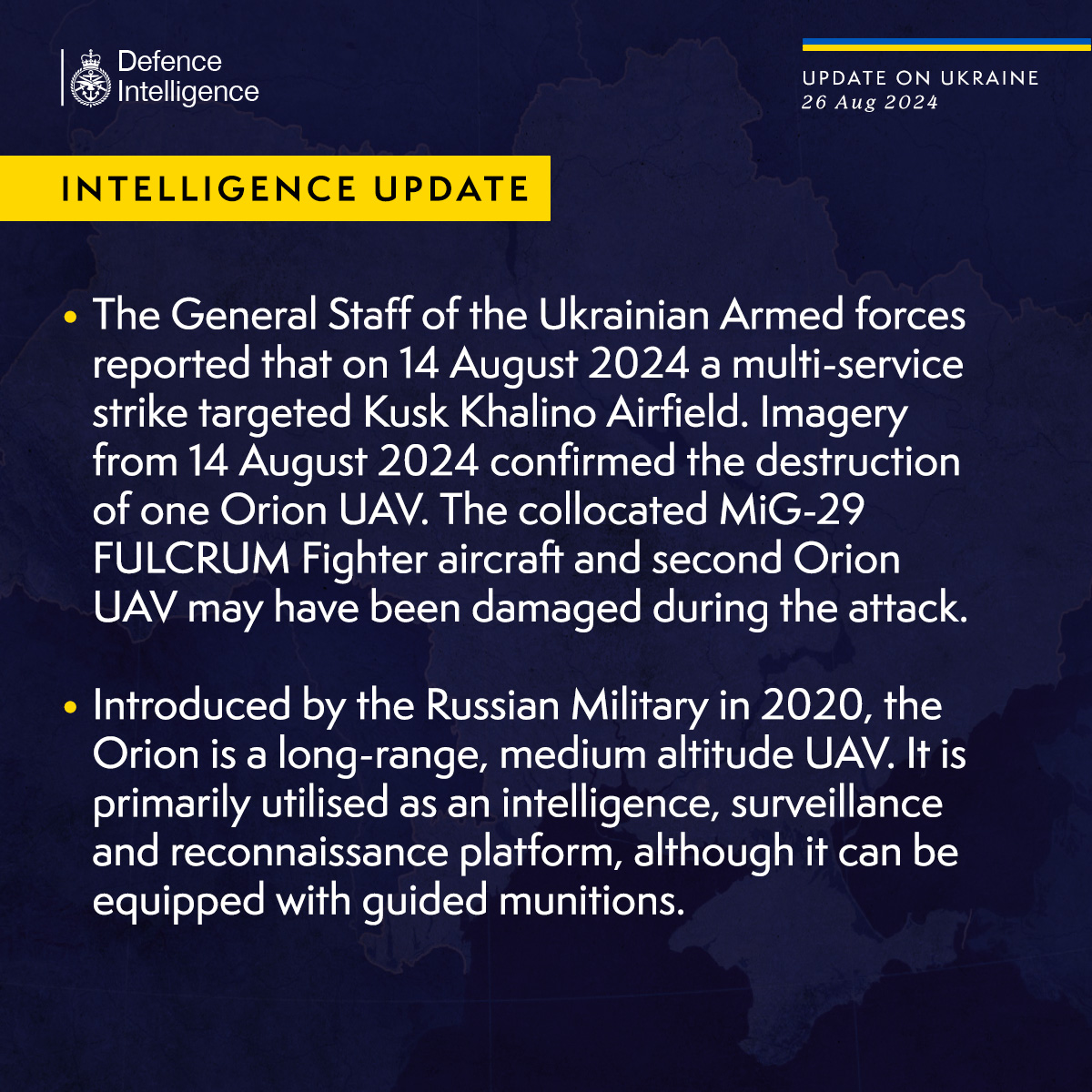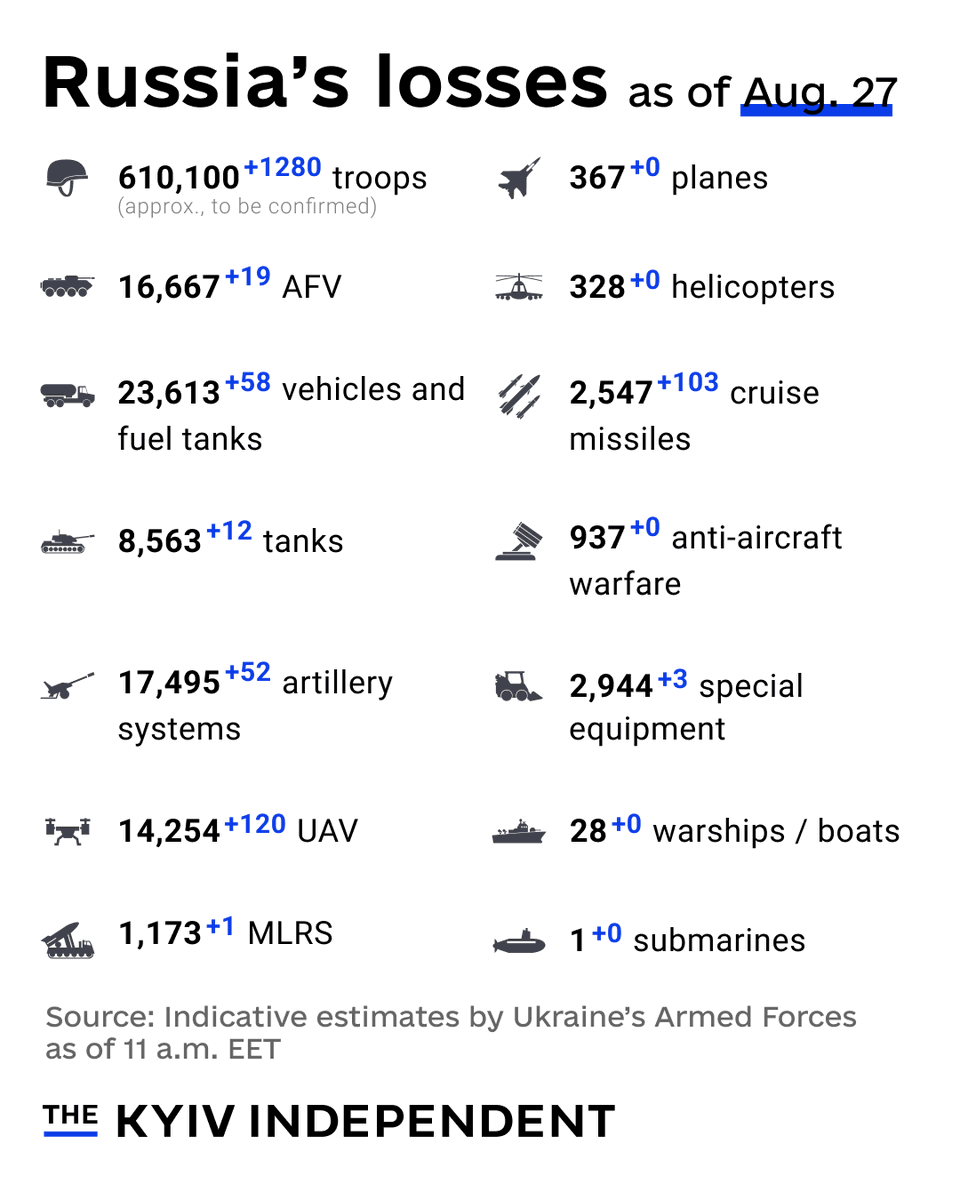Skip to comments.
Attack On Europe: Documenting Russian Equipment Losses During The 2022 Russian Invasion Of Ukraine (2 year anniversary)
ORYX ^
| Since February 24, 2022 and daily
| ORYX
Posted on 02/24/2024 5:59:01 AM PST by SpeedyInTexas
This list only includes destroyed vehicles and equipment of which photo or videographic evidence is available. Therefore, the amount of equipment destroyed is significantly higher than recorded here. Loitering munitions, drones used as unmanned bait, civilian vehicles and derelict equipment are not included in this list. All possible effort has gone into avoiding duplicate entries and discerning the status of equipment between captured or abandoned. Many of the entries listed as 'abandoned' will likely end up captured or destroyed. Similarly, some of the captured equipment might be destroyed if it can't be recovered. When a vehicle is captured and then lost in service with its new owners, it is only added as a loss of the original operator to avoid double listings. When the origin of a piece of equipment can't be established, it's not included in the list. The Soviet flag is used when the equipment in question was produced prior to 1991. This list is constantly updated as additional footage becomes available.
(Excerpt) Read more at oryxspioenkop.com ...
TOPICS: Military/Veterans
KEYWORDS: 0killthisthread; 1637borders; 3daywar; agitprop; alfredeblitz; americalast; angrykeywordtroll; anotherputinfail; anydaynowukrainewins; assistantdemsonfr; attackoneurope; beaubothebsartist; beauzo; bidenswar; bobomaximus; breevingroom; byepif; byespeedy; cantbreev; cheesymaximus; crazyivan; dailydeathfap; dailypropaganda; deadthread; deathcult; deepinthespamforest; delusionalzeepers; demyanganul; dimwit; dippythemelon; dualcitizenssuck; escalation; fishiemaximus; foreigntrolls; foreigntrollsonfr; formersovietofficers; freeploader; freeploadingspammer; gabbagabbahey; ghoulishdelight; gleefulnosegold; globohomo; goodriddance; hopium; irynazarutska; itsoveriwasright; jonboy; jonboyputinlover; keiththedimwit; kievstronk; liberalatpost7819; liedaboutleaving; melon; melonballsforever; melonlovesputin; melonlovesrussia; melonmemewarrior; melonmlrs; motherpif; muscovite; nato; omgputinputinputin; oyveygoyim; paidazovfans; paidazovtrolls; paidrussiantrolls; pancakemaximus; phdft; pifpouf; pifpuffs; planetzeep; polygamy; propagandareturns; put; putin; putinsfolly; putinstarted; putinswar; russia; russiandelusions; saintvolodymyr; siloviki; slaviccivilwar; slavictrolls; snufffilmsonfr; snufffilmtx; snuffpornforzeepers; snuffyfromtexas; spammyintexas; speedomaximus; speedycameback; speedyhadenough; speedyintroll; speedyisaliveandwell; speedyisdeadandfried; speedylied; stankazzintx; stankazztexicunt; staygonethistime; stenrynning; stinkstankstunkazz; stpetersburgtrolls; talkingtomypif; thisthreadisdead; tippecanoeandpiftoo; toldyouso; tothelastrussian; tothelastukrainian; ukraine; unhealthyobsession; usaidcheckbounced; usaidtrolls; vladtheimploder; warporn; wellbye; wildberry; yostanky; yurpstronk; zeepercirclejonk; zeepercreepers; zeeperdeathcult; zeeperhomeworld; zeeperloveazov; zeeperpr0n; zeepers; zeepersjustwannazeep; zeeperslovedeath; zeeperslovevindman; zeepersworshipdeath; zeepervictoryparade; zeepharder; zeeploaders; zeepyintexas; zipadeedoodah; zot; zottedintexas; zottyintexas
Navigation: use the links below to view more comments.
first previous 1-20 ... 5,741-5,760, 5,761-5,780, 5,781-5,800 ... 20,981-20,996 next last
To: marcusmaximus
Not what the usuals are posting on FR
Not surprising, but I find it funny how anytime someone posts a thread that is not overtly pro Russian the attacks and memes about “spamming” free republic spam the posts
Hard is saying something like only 15 were shot down….
I am sure there are ones saying all F-16s/18s/22s and 35s were destroyed as well
Like I am watching the demonrat convention
To: blitz128
It’s telling that there’s hardly any video or photos of the aftermath of the Russian attack this morning. Russian bloggers are fuming. Putin wanted photos and videos for PR but he didn’t get any.
To: marcusmaximus; blitz128; BeauBo
"It’s telling that there’s hardly any video or photos of the aftermath of the Russian attack..."
The lack of video has not stopped the pro-ruzzian trolls from claiming a huge success.
Meanwhile:
Fire at an oil refinery in Omsk 🇷🇺 ❤️
It is known that the flame area at the Gazprom Neft refinery exceeded 1 thousand square meters.
The authors of the video say that rescuers could have been injured during the fire extinguishing process.
https://x.com/BeRuzzia/status/1828149395847844008
![]()
Also, at least 10 of the 76 oil containers at the Proletarsk oil depot are still burning brightly (Day 9).
To: PIF
Russians built three new pontoon bridges over the Seym river, Kursk region, in Russia. Target coordinates:
Pontoon Bridge 1:
51°22'55.44"N, 34°31'40.53"E
Pontoon Bridge 2:
51°23'26.46"N, 34°33'36.81"E
Pontoon Bridge 3:
51°21'1.49"N, 34°40'40.93"E
https://x.com/Tendar/status/1828075396929077536
![]()
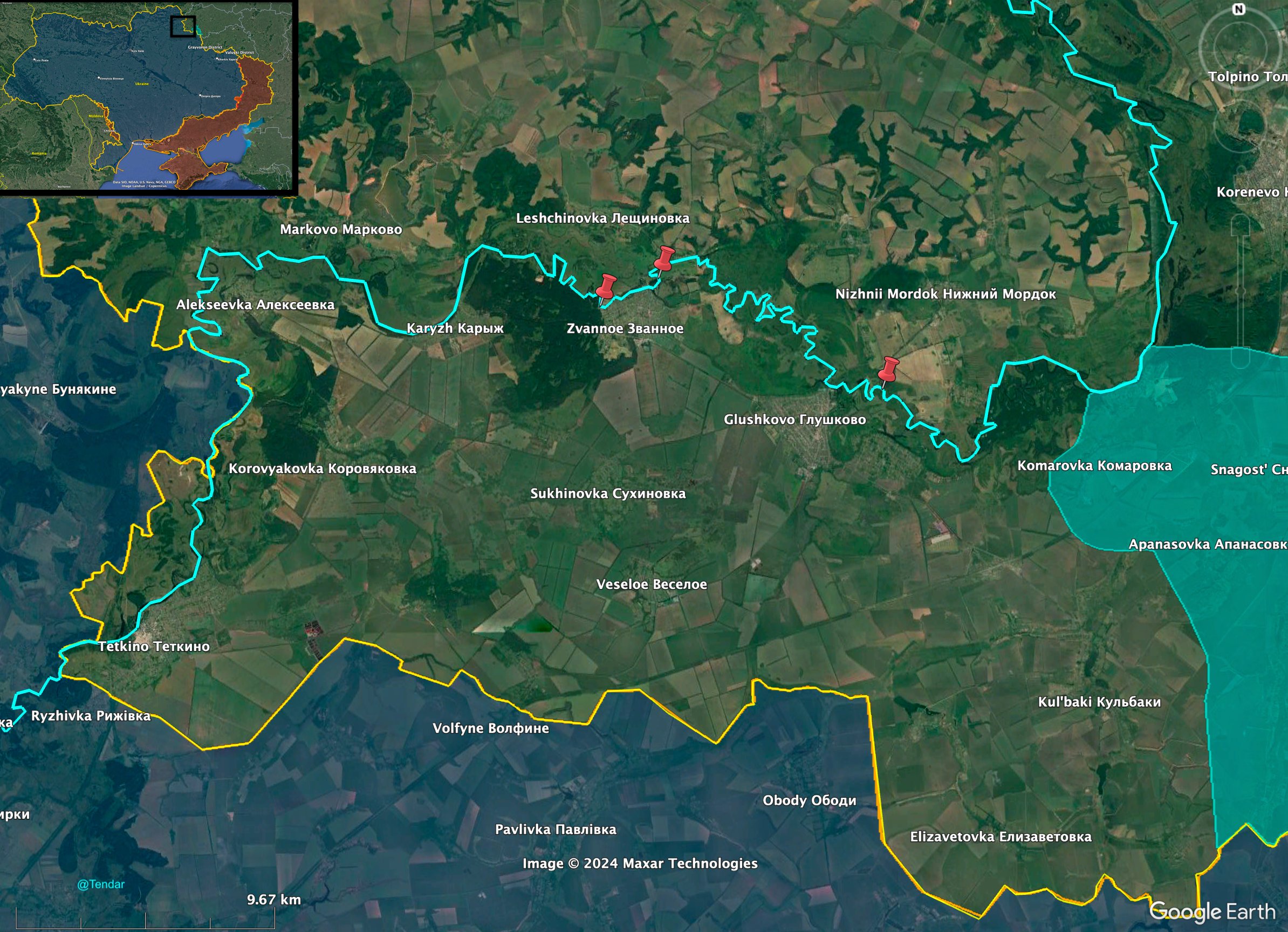
![]()
I am confident that any ruzzian "activity" at any of the pontoon bridges will be visited by Mr. HIMARs.
To: FtrPilot
The lack of video has not stopped the pro-ruzzian trolls from claiming a huge success.
—
Hardspurned claims to have been posting images of damages all day long and not seen one downed Russian bird. Gloating, preening he is.
5,765
posted on
08/26/2024 3:15:02 PM PDT
by
PIF
(They came for me and mine ... now its your turn)
To: FtrPilot
“Target coordinates:”
OK everyone, bunch up together, and smile for the cameras, Let’s make it an extra special shot.
To: AdmSmith
Russian Offensive Campaign Assessment, August 26, 2024
The current Belarusian build-up along the Ukrainian border is likely intended to divert and stretch Ukrainian forces along a wider frontline, as ISW continues to assess that Belarusian forces remain unlikely to invade Ukraine due to constraints facing Belarusian President Alexander Lukashenko. An analysis by Ukraine-based open-source intelligence organization Frontelligence Insight and Rochan Consulting suggests that Belarusian combat units typically operate at only 30 to 40 percent of their total end strength and rely on mobilization to staff units, indicating that serious preparations for a major Belarusian invasion of Ukraine would be more apparent as Belarus has not announced general mobilization.[15] The Fronttelligence investigation stated the scale of a hypothetical Belarusian attack into Ukraine would likely be limited and suggested that the Belarusian forces could be conducting this operation to distract Ukrainian forces from their efforts elsewhere along the frontline, consequently supporting Russian forces committed throughout Ukraine and Kursk Oblast. Andriy Demchenko reported on August 26 that the current number of Russian forces in Belarus is insufficient for a significant coordinated invasion of Ukraine from the Gomel Oblast border.[16] A Belarusian invasion of Ukraine, or even Belarus’ military involvement in the war, would degrade Belarusian President Alexander Lukashenko‘s ability to defend his regime (and be very unpopular domestically), and ISW has previously assessed that Lukashenko is extremely unlikely to risk combat with Ukraine that could weaken his regime or drastically increase Belarusian domestic discontent.[17]
Belarusian presidential elections are approaching in February 2025, and Lukashenko likely desires to retain control over public sentiment, as well as access to his military to crack down on any protests surrounding the elections, as he did in late 2020. Lukashenko leveraged his military to crack down against previous mass protests against Lukashenko’s staged presidential elections in 2020, and a loss of capabilities among the Belarusian military that could result from combat operations in Ukraine would degrade Lukashenko’s ability to crush future protests. Lukashenko likely also seeks to avoid being dragged into Russia's war with Ukraine to avoid the domestic political costs that such involvement would incur. Possible Belarusian mobilization expected battlefield casualties, Belarus’ further international isolation, and negative economic ramifications would likely increase public discontent and undo Lukashenko’s efforts to restore his regime's stability since 2020.
Additionally, Lukashenko has worked to maintain some level of Belarusian autonomy and sovereignty vis-a-vis Russia while portraying Belarus as Russia‘s equal partner in order to safeguard his power from the Kremlin's increased desire to subordinate Belarus to Moscow through the Union State.[18] Belarus directly joining Russia's war would indicate that Moscow has succeeded in eliminating Lukashenko’s maneuvering space and established suzerainty over Belarus. ISW has previously observed Belarus deploy personnel to the Ukrainian border at the end of 2022 and early 2023 in a similar manner to current deployments and assessed that these efforts served primarily to stretch Ukrainian forces along the theater of war and disrupt their operations thereby supporting Russian operations.[19] Belarus may be once again conducting such activity to fix Ukraine's limited forces near Ukraine's international border with Belarus in support of a Russian campaign design that seeks to stretch Ukrainian forces thin throughout the theater. Belarus’ support of Russian efforts is a strong indicator of the extent to which the Kremlin has been consolidating its control over Belarus since 2020.
more info + maps https://www.understandingwar.org/backgrounder/russian-offensive-campaign-assessment-august-26-2024
5,767
posted on
08/26/2024 11:49:14 PM PDT
by
AdmSmith
(GCTGATATGTCTATGATTACTCAT)
To: AdmSmith
5,768
posted on
08/27/2024 12:47:06 AM PDT
by
AdmSmith
(GCTGATATGTCTATGATTACTCAT)
To: AdmSmith
5,769
posted on
08/27/2024 12:53:21 AM PDT
by
AdmSmith
(GCTGATATGTCTATGATTACTCAT)
To: PIF
“...Gloating, preening he is.”
We’ve just passed the two-and-a-half-year mark of this all-out war. And still Ukraine has resisted subjugation and the ruthless invasion of its gigantic neighbor. Meanwhile Russia’s internal problems continue to grow. Its Jew-hating and pro-Hamas policies are turning off ever more Americans. Its rehabilitation of Stalin is completely sickening. The Russian trolls are paid to be snotty zip wads but what complete evil losers they are. They are cornered with no allies but Iran, terror organizations, and North Korea. They can still pretend to gloat, but it rings hollow.
5,770
posted on
08/27/2024 1:50:10 AM PDT
by
Monterrosa-24
(Saludemos la patria orgullosos)
To: Monterrosa-24
5,771
posted on
08/27/2024 3:26:02 AM PDT
by
AdmSmith
(GCTGATATGTCTATGATTACTCAT)
Comment #5,772 Removed by Moderator
To: FtrPilot
5,773
posted on
08/27/2024 5:32:33 AM PDT
by
PIF
(They came for me and mine ... now its your turn)
NEOCONS CELEBRATE KAMALA'S FOREIGN POLICY SPEECH
CLICK GREENWALD ON THE NOSE FOR COMPLETE DETAILS

To: PIF
“It took 15 years to built the oil storage in Proletarsk. All burnt down in a week.” The fires in Proletarsk are not completely extinguished, even after 10 days, but there is not much left either. That facility is gone.
https://x.com/Tendar/status/1828346298526814469
![]()
To: PIF
To: FtrPilot
Reporting From Ukraine:
https://www.youtube.com/@RFU/videos
Reporting From Ukraine Uncensored Combat Footage (from this and past Reports) is found on Telegram:
https://t.me/RFUEnglish or @RFUEnglish
[ You need to have the Telegram app to view. ]
The complete transcript.
—
[ New Ukrainian Missile-Drones with Cluster Munitions Annihilate Russian Airbases
Reporting from Ukraine ]
—
Today [ Aug 27 ], there are a lot of updates from the Kursk direction.
Here, while successfully continuing their offensive in this region, the Ukrainian armed forces conducted a series of strikes against Russian airfields and ammunition depots deep into enemy territory.
These strikes not only aimed to achieve a strategic impact, but also amplify the ongoing ground operations by giving respite from Russian bombardments. To boost their efforts even more, Ukrainians used their newest domestically developed weapon that has the potential to become a game changer and is already causing Russians a lot of new problems.
On Ukraine’s Independence Day, President Volodymyr Zelensky officially unveiled the latest advancement in the nation’s military technology: a new strategic weapon named Palyanitsa. While military experts noted the ongoing blurring of distinctions between various types of armaments, they emphasized that the Palyanitsa functions more as a cruise missile than a drone.
This missile drone is highly maneuverable, equipped with a jet engine and a powerful warhead, enabling it to strike long-range targets, including 20 previously unreachable Russian military airfields.
President Zelensky announced that the Palyanitsa had already been deployed in a recent strike, targeting key Russian military infrastructure. The strike was part of Ukraine’s immediate objectives to weaken Russian defensive operations in the Kursk region, and reduce offensive capabilities toward the Kharkiv region.
The initial strike targeted a large military warehouse complex in Russia’s Voronezh region. According to Russian witnesses, the sound of a jet engine from an unidentified aircraft was heard just before the attack, as it approached the intended target.
Several geolocated videos quickly emerged, capturing the large fires that erupted following the explosions. The next day, satellite images provided a clearer picture of the extensive devastation inflicted on the impact area by this new Ukrainian weapon.
It is expected to be deployed in large quantities, as it is cheaper and easier to produce than the Neptune anti-ship cruise missile, which the Ukrainians have already successfully adapted for other uses.
Notably, these new drones do not explode upon impact, but instead detonate as they approach their targets. This approach was developed to maximize the destructive potential of cluster munitions, as mid-air explosions significantly expand the area of damage, as evident in the released images.
As a result, a swarm of these drones can effectively substitute for ATACMS missiles, which are restricted from being used deep within Russian territory. Flying at speeds exceeding 400 km per hour, these drones offer a formidable alternative for traditional long-range munitions.
This Ukrainian operation followed a series of highly effective strikes against targets in the Volgograd and Krasnodar regions in the preceding days. Sources within Ukraine’s Security Service revealed that they successfully targeted several warehouses stocked with glide bombs and fuel at the Marinovka airfield in Volgograd Oblast.
According to these sources, the Russian aircraft stationed there had been actively involved in bombing Ukrainian frontline settlements and positions. The strike triggered numerous secondary explosions in the warehouses. Geolocated footage captured plumes of smoke and explosions, while satellite imagery confirmed significant damage to the hangars housing Su-34 fighter jets.
Reports later indicated that at least one aircraft was destroyed, and several others sustained severe damage, due to the type of ammunition used by the Ukrainians.
The recent Ukrainian attacks have led to a notable decrease in Russian strikes, and overall aviation activity over the past several days, with the number of daily glide bomb strikes in the Kursk region dropping by half compared to the previous week. This shift in dynamics has provided significant advantages for Ukrainian forces.
Russian military analysts have raised concerns warning that the Ukrainian army is continuing to amass personnel and equipment in several key areas within the region, including near Teino just south of the border near Suja and to the north. These strike groups which are typically vulnerable to bombardment during their formation, have become a priority target for Russian aviation.
However due to the damage inflicted by Ukrainian strikes on Russian airfields these Ukrainian forces are now able to prepare in relative safety for a new offensive aimed at capturing the entire 700 square kilometer Glushkov area.
The reduction in Russian bombardments also allows Ukrainian forces to easily fortify their positions within the Kursk region, which will ultimately make it even more challenging and costly for the Russians to push them back beyond the international border.
Overall, Ukrainians continued their efforts to weaken Russian military capabilities by targeting key enemy a fields and warehouses with various long range weapons.
These calculated strikes had an immediate impact in the Kursk region providing crucial support to Ukrainian ground operations during a critical transition to the second stage of their large scale offensive inside Russia.
Ukrainians achieved this by introducing their latest innovation a new type of drone that is not only unrestricted by Western prohibitions on use within Russia, but also employs a more effective method for targeting key infrastructure and equipment with cluster munitions.
5,777
posted on
08/27/2024 6:08:42 AM PDT
by
PIF
(They came for me and mine ... now its your turn)
To: BeauBo
The air defense systems Ukraine 🇺🇦 used to intercept over 200 missiles and drones yesterday NASAMS SAM Systems
IRIS-T SLM Systems
Patriot SAM Systems
SAMP-T SAM Systems
S-300 SAM Systems
Hawk SAM Systems
Buk SAM Systems
RIM-7 Modified Buks
F-16 Fighter Jets
MiG-29, Su-27 Fighter Jets
Gepard, Skynex Anti-Aircraft Guns
Small Arms Anti-Drone Teams
Vampire APKWS Launchers
S-125, Strela SAM Systems
9K22 Osa SAM Systems
Avenger, Crotale, Aspide Launchers
Stinger, Stormer, Other MANPADS
Several different Anti-Air Gun Systems
https://x.com/ukraine_map/status/1828285814188527872


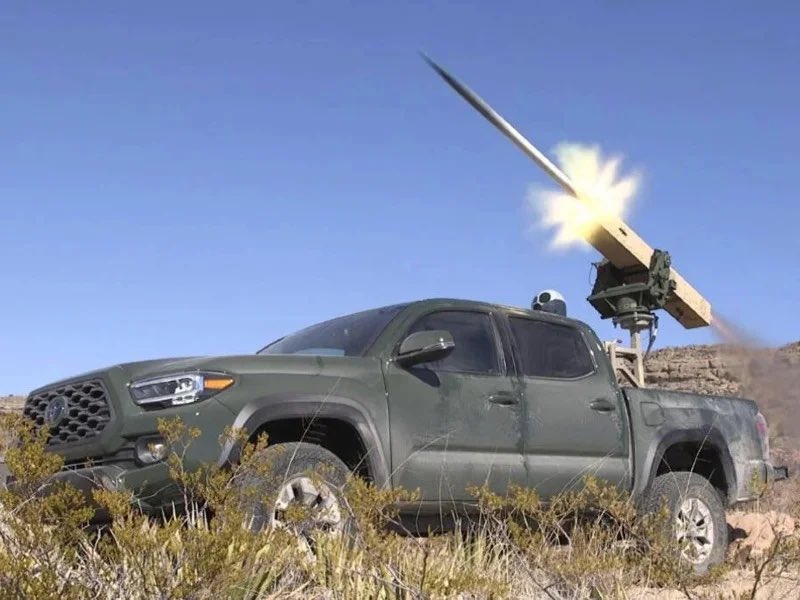
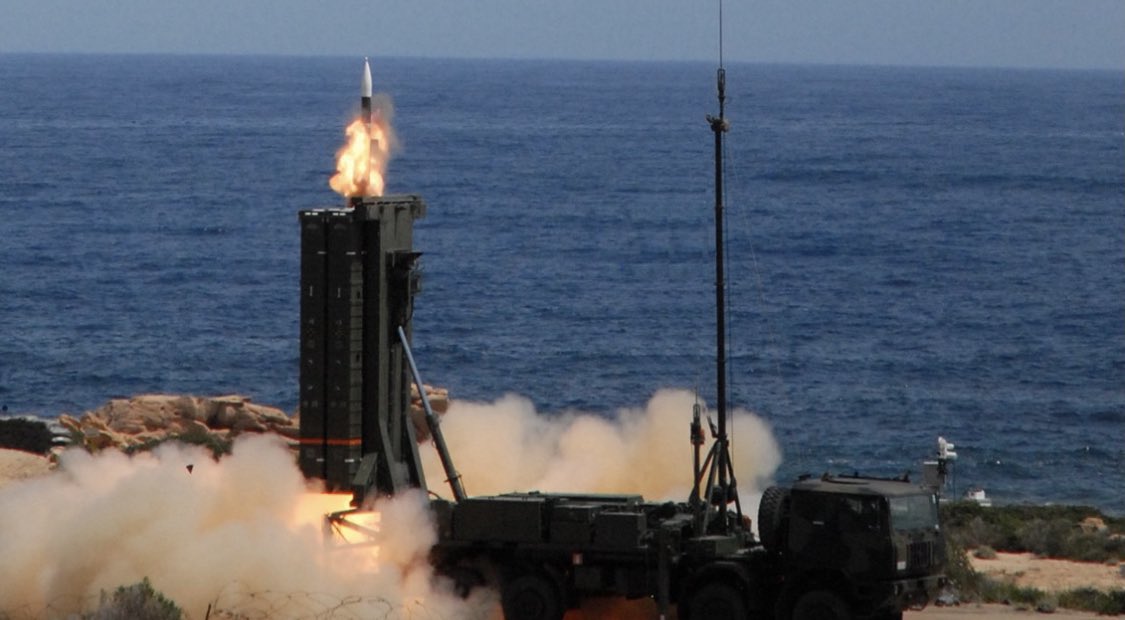
![]()
Don't forget the Mi-24 Hind helicopter.
href="https://freerepublic.com/focus/bloggers/4219673/posts?page=5747#5747
![]()
To: PIF
The 79th Air Assault Brigade successfully repelled another Russian mechanized assault on their positions near Kostyantynivka. Initially, they destroyed enemy equipment using drones, and then methodically eliminated the remaining assault groups.https://x.com/NOELreports/status/1828345620878282969
![]()
To: PIF
Another Russian missile and drone attack overnight, hoping Ukrainian air defense was saturated. Shot down:
0/3 Kh-47M2 Kinzhal aeroballistic missiles
0/1 Iskander-M ballistic missile
0/1 Iskander-K cruise missile
5/5 Kh-101 cruise missile
60/81 Shahed drones
The Air Force added that "ten enemy drones have been downed (presumably crashed) on the territory of Ukraine."
https://x.com/NOELreports/status/1828321957827195014

![]()
Navigation: use the links below to view more comments.
first previous 1-20 ... 5,741-5,760, 5,761-5,780, 5,781-5,800 ... 20,981-20,996 next last
Disclaimer:
Opinions posted on Free Republic are those of the individual
posters and do not necessarily represent the opinion of Free Republic or its
management. All materials posted herein are protected by copyright law and the
exemption for fair use of copyrighted works.
FreeRepublic.com is powered by software copyright 2000-2008 John Robinson

